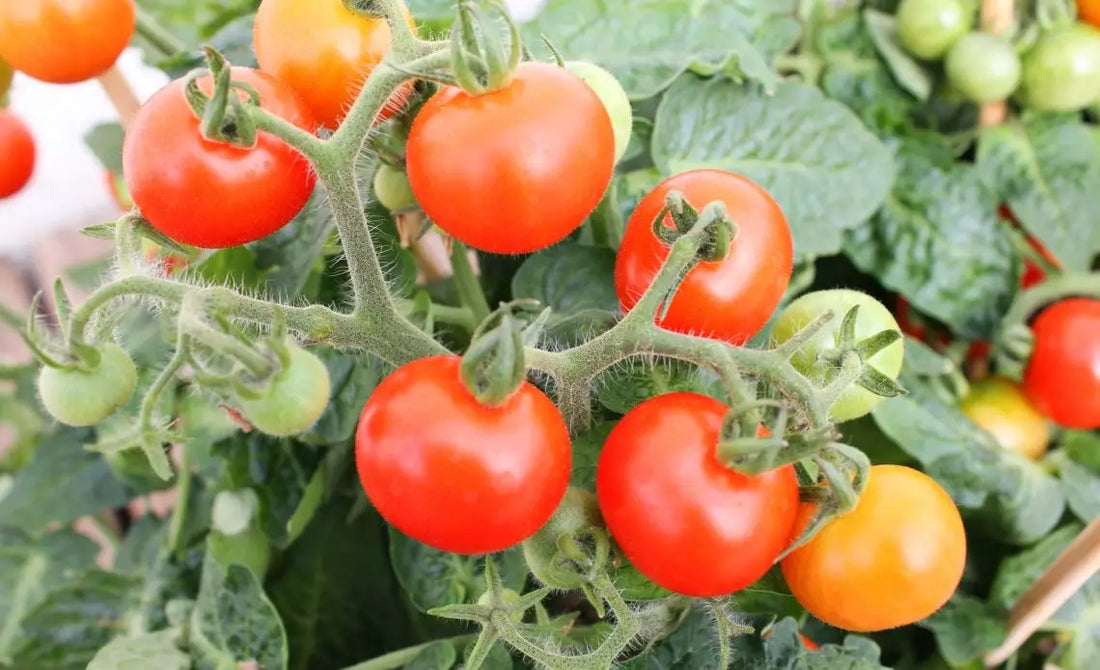
"Organic Solutions for Tomato Powdery Mildew"
Share
10 Revolutionary Organic Control Measures for Powdery Mildew in Tomato Crops

Introduction
Powdery mildew, a common fungal disease that affects tomato crops worldwide, can significantly impact plant health and yield. In this blog post, we will explore 10 revolutionary control measures to combat powdery mildew effectively. By understanding the importance of organic solutions, we pave the way for sustainable practices in agriculture.
Cultural Control Methods
- Proper plant spacing and pruning play a vital role in preventing powderyew by reducing plant density and increasing airflow.
- Enhancing air circulation and light exposure around tomato plants can help create an environment less conducive to powdery mildew growth.
- Implementing mulching and adopting proper watering techniques can aid in maintaining consistent moisture levels and preventing the spread of the disease.

Biological Control Agents
- Beneficial microorganisms can be introduced to tomato crops to outcompete powdery mildew-causing fungi.
- Using predatory insects like ladybugs and lacewings can serve as natural predators to control powdery mildew populations.
- Biofungicides derived from natural sources can prove effective in managing powdery mildew without harming beneficial insects or the environment.

Organic Fungicides
- Neem oil, a natural fungicide sourced from the neem tree, exhibits antifungal properties that can combat powdery mildew effectively


- Baking soda and soap solutions act as a gentle yet powerful remedy against powdery mildew by altering the pH of the leaf surface.
- Serenade Garden Disease Control, a biofungicide containing beneficial bacteria, offers a non-toxic solution for managing fungal diseases like powdery mildew

Herbal Remedies
- Garlic and onion spray, when applied to tomato plants, can act as a potent antifungal agent against powdery mildew.
- Chamomile tea, known for its calming properties, can also serve as a fungicidal spray to protect tomato crops from powdery mildew.
- Aloe vera extract, with its natural healing properties, can help suppress powdery mildew growth and promote plant health.

Conclusion
- In conclusion, this medium implementation of revolutionary organic control measures for powdery mildew in tomato crops is not only effective but also environmentally friendly. By adopting sustainable practices in agriculture, we can ensure the longevity and health of our crops. The future outlook for organic solutions in crop protection looks promising, emphasizing the importance of prioritizing organic control measures.
FAQs
- How often should organic control measures be applied?
- Organic control measures should be applied preventatively and regularly throughout the growing season for optimal effectiveness.
- Are organic solutions effective against severe powdery mildew outbreaks?
- Yes, organic solutions can be effective even against severe powdery mildew outbreaks if applied correctly and consistently.
- What are the potential risks of using chemical fungicides for powdery mildew control in tomato crops?
- Chemical fungicides can pose risks to human health, beneficial insects, and the environment, making organic solutions a safer and more sustainable choice.
